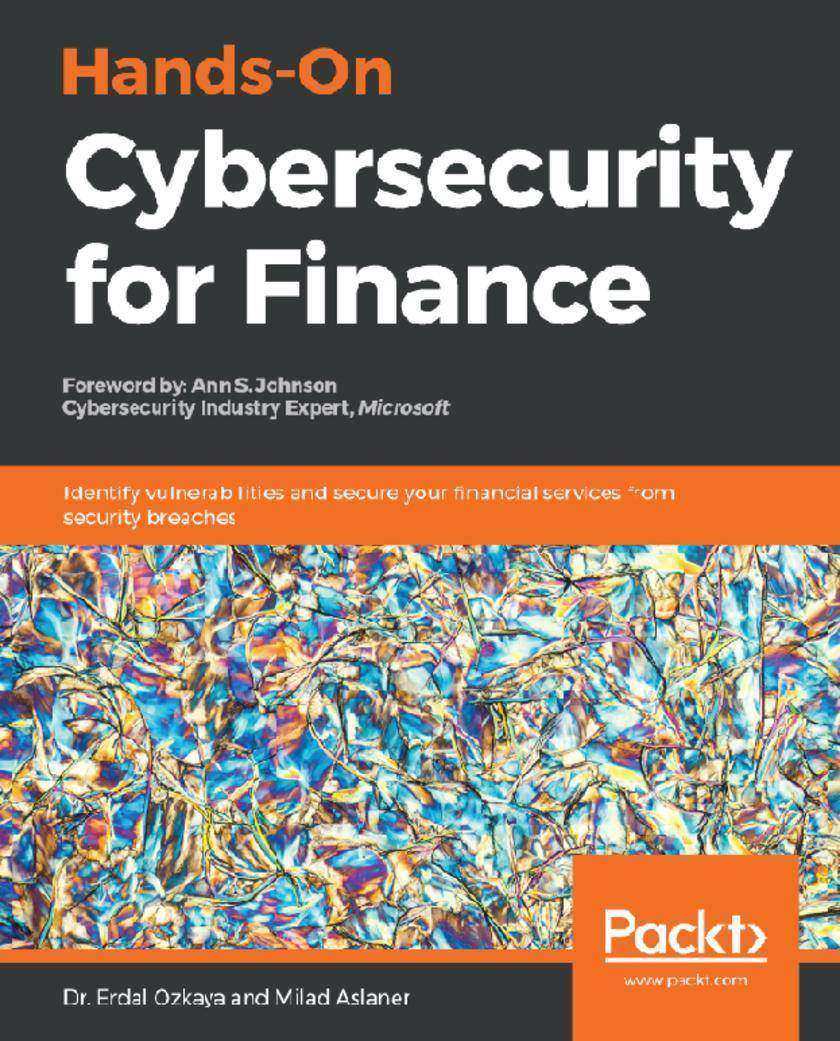
Hands-On Cybersecurity for Finance
¥81.74
A comprehensive guide that will give you hands-on experience to study and overcome financial cyber threats Key Features * Protect your financial environment with cybersecurity practices and methodologies * Identify vulnerabilities such as data manipulation and fraudulent transactions * Provide end-to-end protection within organizations Book Description Organizations have always been a target of cybercrime. Hands-On Cybersecurity for Finance teaches you how to successfully defend your system against common cyber threats, making sure your financial services are a step ahead in terms of security. The book begins by providing an overall description of cybersecurity, guiding you through some of the most important services and technologies currently at risk from cyber threats. Once you have familiarized yourself with the topic, you will explore specific technologies and threats based on case studies and real-life scenarios. As you progress through the chapters, you will discover vulnerabilities and bugs (including the human risk factor), gaining an expert-level view of the most recent threats. You'll then explore information on how you can achieve data and infrastructure protection. In the concluding chapters, you will cover recent and significant updates to procedures and configurations, accompanied by important details related to cybersecurity research and development in IT-based financial services. By the end of the book, you will have gained a basic understanding of the future of information security and will be able to protect financial services and their related infrastructures. What you will learn * Understand the cyber threats faced by organizations * Discover how to identify attackers * Perform vulnerability assessment, software testing, and pentesting * Defend your financial cyberspace using mitigation techniques and remediation plans * Implement encryption and decryption * Understand how Artificial Intelligence (AI) affects cybersecurity Who this book is for Hands-On Cybersecurity for Finance is for you if you are a security architect, cyber risk manager, or pentester looking to secure your organization. Basic understanding of cybersecurity tools and practices will help you get the most out of this book.
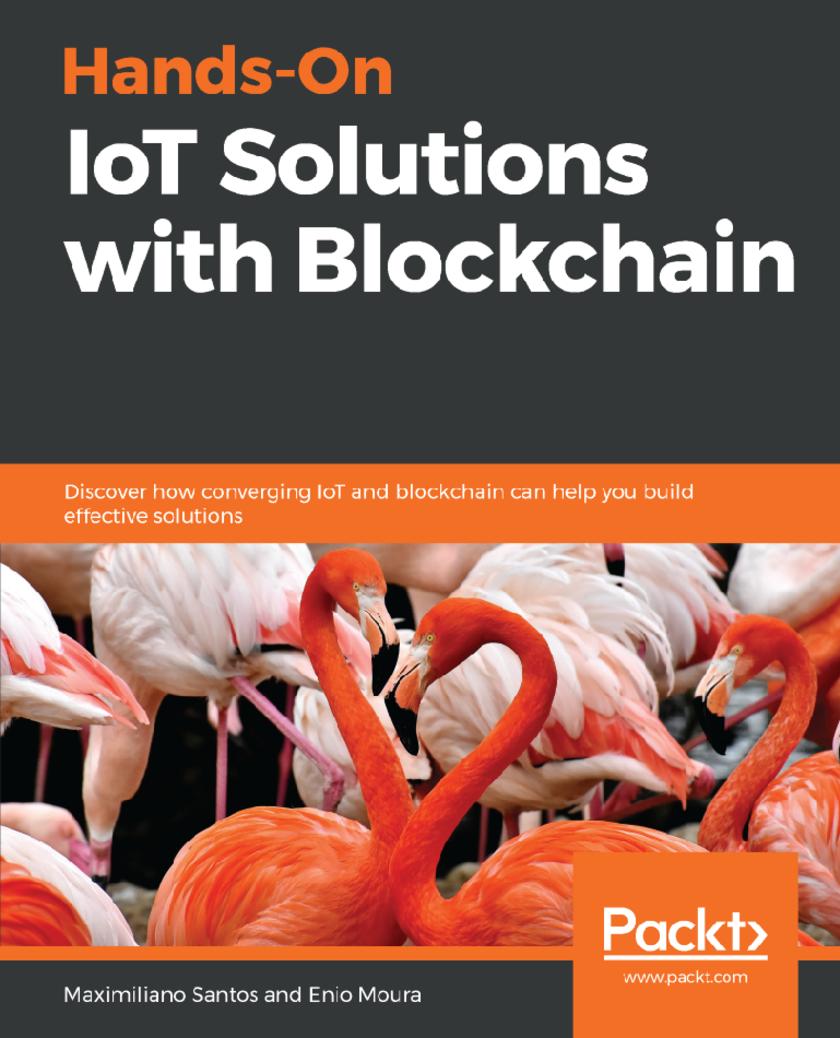
Hands-On IoT Solutions with Blockchain
¥63.21
Integrate an end-to-end logistic chain using IBM Blockchain and IoT platforms Key Features *Explore practical implementation of ledger technology in the IoT architecture *Study security best practices for your smart devices *Understand Blockchain implementation for end-to-end IoT solutions Book Description Blockchain has been the hot topic of late thanks to cryptocurrencies. To make matters more interesting, the financial market is looking for ways to reduce operational costs and generate new business models, and this is where blockchain solutions come into the picture. In addition to this, with Internet of Things (IoT) trending and Arduino, Raspberry Pi, and other devices flooding the market, you can now create cheap devices even at home. Hands-On IoT Solutions with Blockchain starts with an overview of IoT concepts in the current business scenario. It then helps you develop your own device on the IBM Watson IoT platform and create your fi rst IoT solution using Watson and Intel Edison.Once you are familiar with IoT, you will learn about Blockchain technology and its use cases. You will also work with the Hyperledger framework and develop your own Blockchain network. As you progress through the chapters, you'll work with problem statements and learn how to design your solution architecture so that you can create your own integrated Blockchain and IoT solution. The next set of chapters will explain how to implement end-to-end Blockchain solutions with IoT using the IBM Cloud platform. By the end of this book, you will have mastered the convergence of IoT and Blockchain technology and exploited the best practices and drivers to develop a bulletproof integrated solution. What you will learn *Understand the key roles of IoT in the current market *Study the different aspects of IBM Watson IoT platform *Create devices, gateways, and applications connected to the platform *Explore the fundamentals of Blockchain *Define good use cases for Blockchain *Discover the Hyperledger Fabric and Composer frameworks *Develop an IBM Watson IoT application using a Intel Edison *Integrate IoT with the Blockchain platform Who this book is for Hands-On IoT Solutions with Blockchain is for you if you are an Internet of Things (IoT) analyst, architect, engineer, or any stakeholder responsible for security mechanisms on an IoT infrastructure. This book is also for IT professionals who want to start developing solutions using Blockchain and IoT on the IBM Cloud platform. Basic understanding of IoT will assist you in understanding key concepts covered in the book.
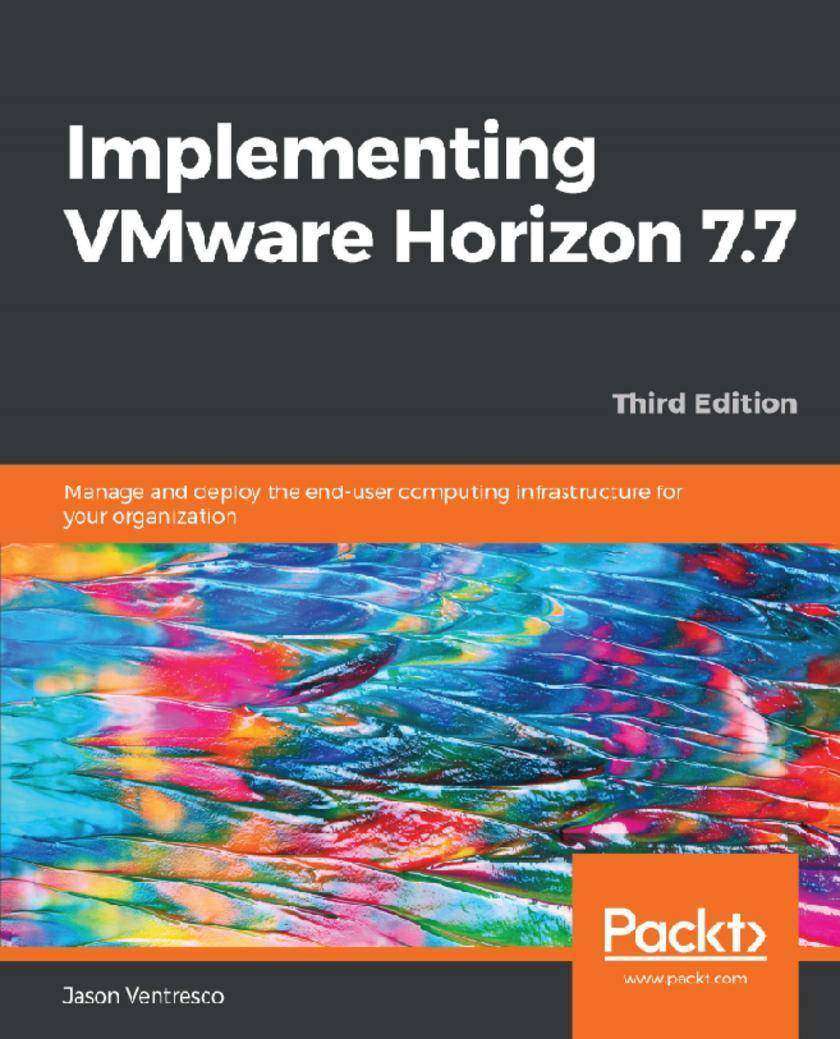
Implementing VMware Horizon 7.7
¥90.46
Effectively implement features and components for any computing environment Key Features *Explore the latest features of VMware Horizon 7.7 *Virtualize your desktop infrastructure using new features introduced in Horizon *Implement App Volumes and User Environment Manager in your infrastructure Book Description This third edition of Implementing VMware Horizon 7.7 has been updated to get you up to speed with VMware Horizon 7.7 by showing you how to use its key features and deploying an end-user computing infrastructure for your own organization. The book begins by guiding you on how to deploy all the core requirements for a VMware Horizon infrastructure. It then moves on to show you how to provision and administer end-user computing resources using VMware Horizon. You’ll not only be able to deploy the core VMware Horizon features, but you’ll also be able to implement new features, such as the Just-in-Time Management Platform (JMP) and the Horizon Console. You’ll also focus on the latest features and components of the Horizon platform and learn when and how they are used. By the end of the book, you will have developed a solid understanding of how your organization can benefit from the capabilities VMware Horizon offers and how each of its components is implemented. What you will learn *Work with the different products that make up VMware Horizon *Implement a multi-site VMware Horizon Pod using the Cloud Pod Architecture feature *Deploy and configure VMware Horizon’s optional components *Implement and maintain Microsoft RDSH, Horizon Linux, and Windows Desktop Pools and RDSH Application Pools *Configure and manage Horizon remotely using PowerCLI *Learn about the Microsoft Windows Group Policy templates for Horizon *Understand how to manage the SSL certificates for each of the VMware Horizon components Who this book is for If you’re a system administrator, solutions architect, or desktop engineer looking to level up your skills working with VMware's Horizon ecosystem and want to build a successful deployment strategy for desktops and applications, this book is for you.
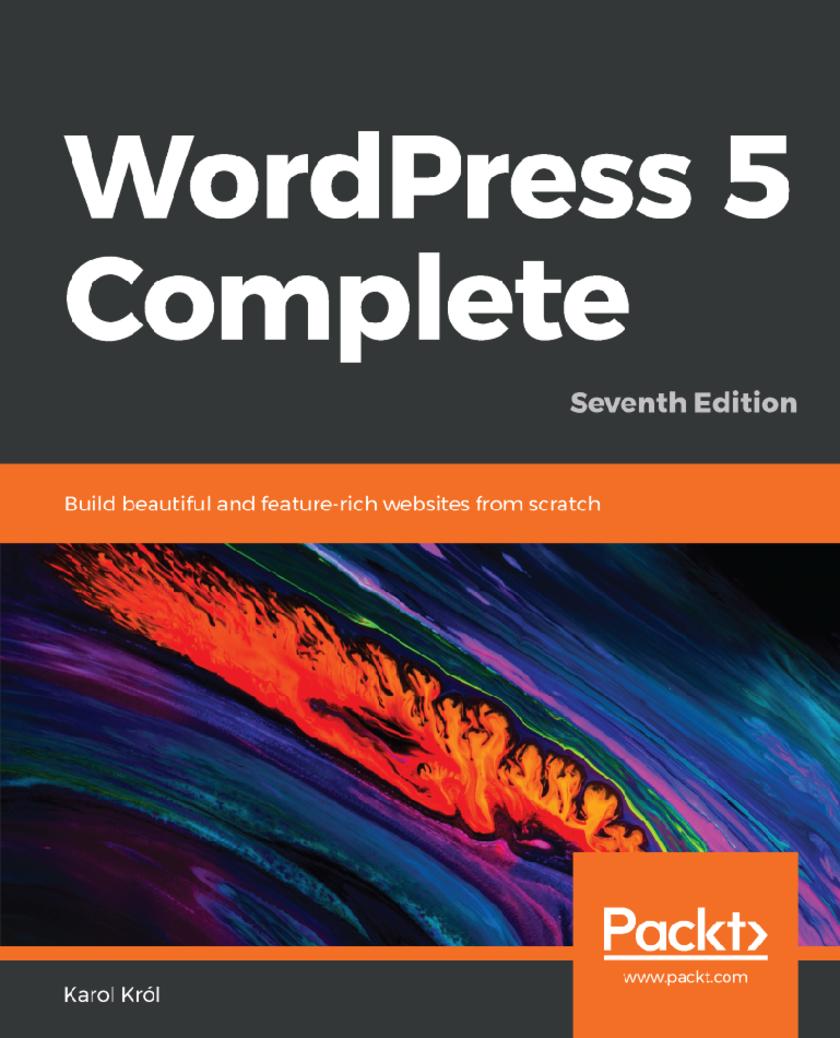
WordPress 5 Complete
¥73.02
An in-depth and comprehensive take on WordPress, covering everything about the platform such as WordPress posts, pages, themes, plugins, and more. Key Features * Get up to date with the latest WordPress 5.0 (Bebo) and all its new features * Beginner-friendly layout and advice you can apply from day one with loads of screenshots and examples * Enrich your development experience with the new block-based editor Gutenberg Book Description Back in the day, when you wanted to launch a new website, you either had to learn web programming yourself or hire a professional who would take care of the whole process for you. Nowadays, with WordPress, anyone can build an optimized site with the least amount of effort possible and then make it available to the world in no time. Here, in the seventh edition of the book, we are going to show you how to build great looking and functional websites using WordPress. The new version of WordPress – 5.0 – comes with a few important changes, and we tell you all about how to use them effectively. From crafting content pages using the block editor, and customizing the design of your site, through to making sure it's secure, we go through it all. The book starts by introducing WordPress and teaching you how to set it up. You are then shown how to create a blog site, start writing content, and even use plugins and themes to customize the design of the site and add some unique elements to set it apart. If you want to get more in-depth, we also show you how to get started creating your own themes and plugins. Finally, we teach you how to use WordPress for building non-blog websites. By the end of the book, you will be sufficiently skilled to design high-quality websites and will be fully familiar with the ins and outs of WordPress. What you will learn * Learn to adapt your plugin with the Gutenberg editor * Create content that is optimized for publication on the web * Craft great looking pages and posts with the use of block editor * Structure your web pages in an accessible and clear way * Install and work with plugins and themes * Customize the design of your website * Upload multimedia content, such as images, audio, and video easily and effectively * Develop your own WordPress plugins and themes * Use WordPress to build websites that serve purposes other than blogs Who this book is for The ideal target audience for this book would be PHP developers who have some basic knowledge of working with WordPress and who want to get a comprehensive practical understanding of working with WordPress and create production-ready websites with it.
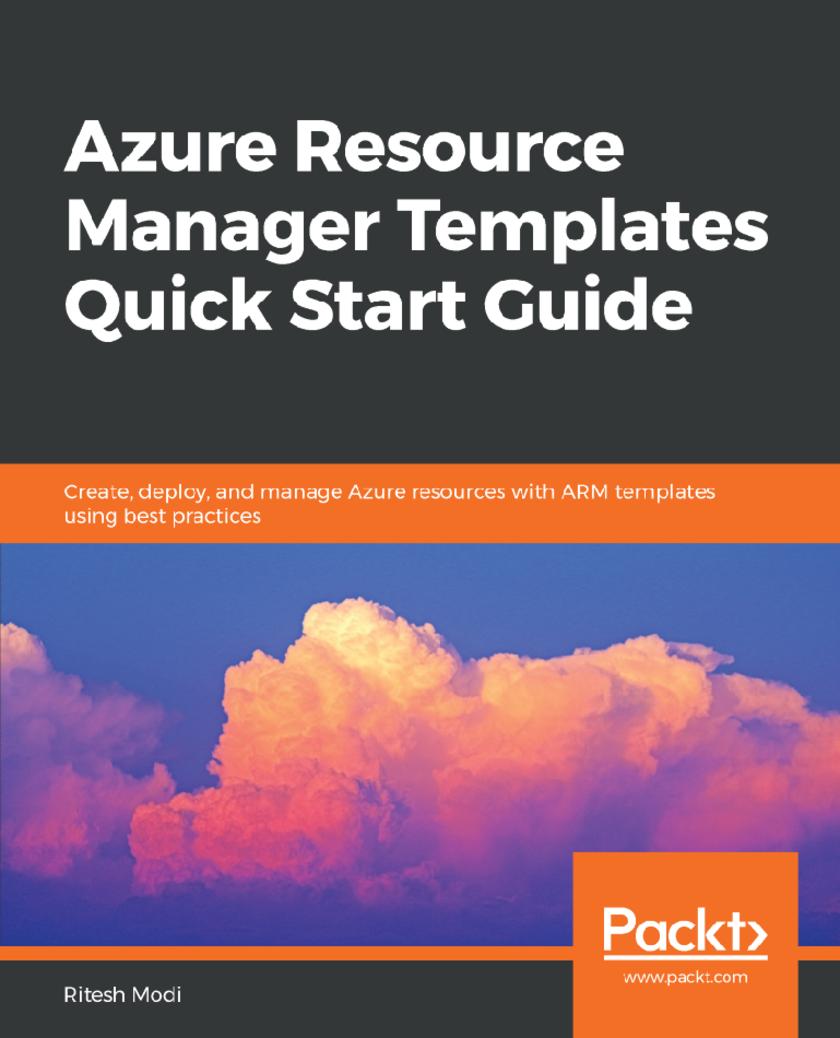
Azure Resource Manager Templates Quick Start Guide
¥54.49
Compose and decompose ARM templates and use advanced concepts like looping, conditions, dependencies, PowerShell and Desired State Configuration. Key Features * Design, implement, and unit test ARM templates * Develop and deploy ARM templates following security best practices Book Description Azure Resource Manager (ARM) templates are declarations of Azure resources in the JSON format to provision and maintain them using infrastructure as code. This book gives practical solutions and examples for provisioning and managing various Azure services using ARM templates. The book starts with an understanding of infrastructure as code, a refresher on JSON, and then moves on to explain the fundamental concepts of ARM templates. Important concepts like iteration, conditional evaluation, security, usage of expressions, and functions will be covered in detail. You will use linked and nested templates to create modular ARM templates. You will see how to create multiple instances of the same resources, how to nest and link templates, and how to establish dependencies between them. You will also learn about implementing design patterns, secure template design, the unit testing of ARM templates, and adopting best practices. By the end of this book, you will understand the entire life cycle of ARM templates and their testing, and be able to author them for complex deployments. What you will learn * Understand the foundations of ARM templates including nested and linked templates * Design, create, and unit test ARM templates using best practices * Learn about conditional deployments, looping, Custom Script Extensions using PowerShell, Bash, and DSC * Implement design patterns related to ARM templates * Run post-deployment PowerShell and Desired State Configuration scripts * Create solutions and deploy them on Azure using ARM templates Who this book is for This books is for developers, DevOps engineers, and architects who have experience in Azure.
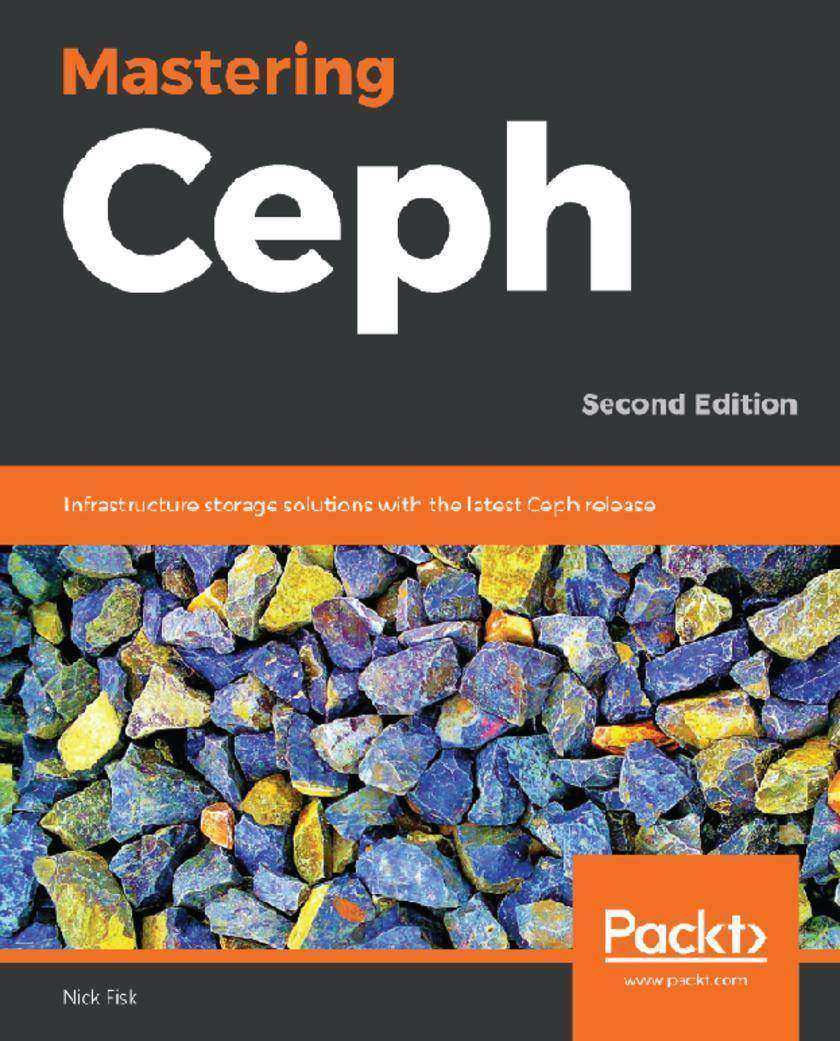
Mastering Ceph
¥81.74
Discover the unified, distributed storage system and improve the performance of applications Key Features * Explore the latest features of Ceph's Mimic release * Get to grips with advanced disaster and recovery practices for your storage * Harness the power of Reliable Autonomic Distributed Object Store (RADOS) to help you optimize storage systems Book Description Ceph is an open source distributed storage system that is scalable to Exabyte deployments. This second edition of Mastering Ceph takes you a step closer to becoming an expert on Ceph. You’ll get started by understanding the design goals and planning steps that should be undertaken to ensure successful deployments. In the next sections, you’ll be guided through setting up and deploying the Ceph cluster with the help of orchestration tools. This will allow you to witness Ceph’s scalability, erasure coding (data protective) mechanism, and automated data backup features on multiple servers. You’ll then discover more about the key areas of Ceph including BlueStore, erasure coding and cache tiering with the help of examples. Next, you’ll also learn some of the ways to export Ceph into non-native environments and understand some of the pitfalls that you may encounter. The book features a section on tuning that will take you through the process of optimizing both Ceph and its supporting infrastructure. You’ll also learn to develop applications, which use Librados and distributed computations with shared object classes. Toward the concluding chapters, you’ll learn to troubleshoot issues and handle various scenarios where Ceph is not likely to recover on its own. By the end of this book, you’ll be able to master storage management with Ceph and generate solutions for managing your infrastructure. What you will learn * Plan, design and deploy a Ceph cluster * Get well-versed with different features and storage methods * Carry out regular maintenance and daily operations with ease * Tune Ceph for improved ROI and performance * Recover Ceph from a range of issues * Upgrade clusters to BlueStore Who this book is for If you are a storage professional, system administrator, or cloud engineer looking for guidance on building powerful storage solutions for your cloud and on-premise infrastructure, this book is for you.
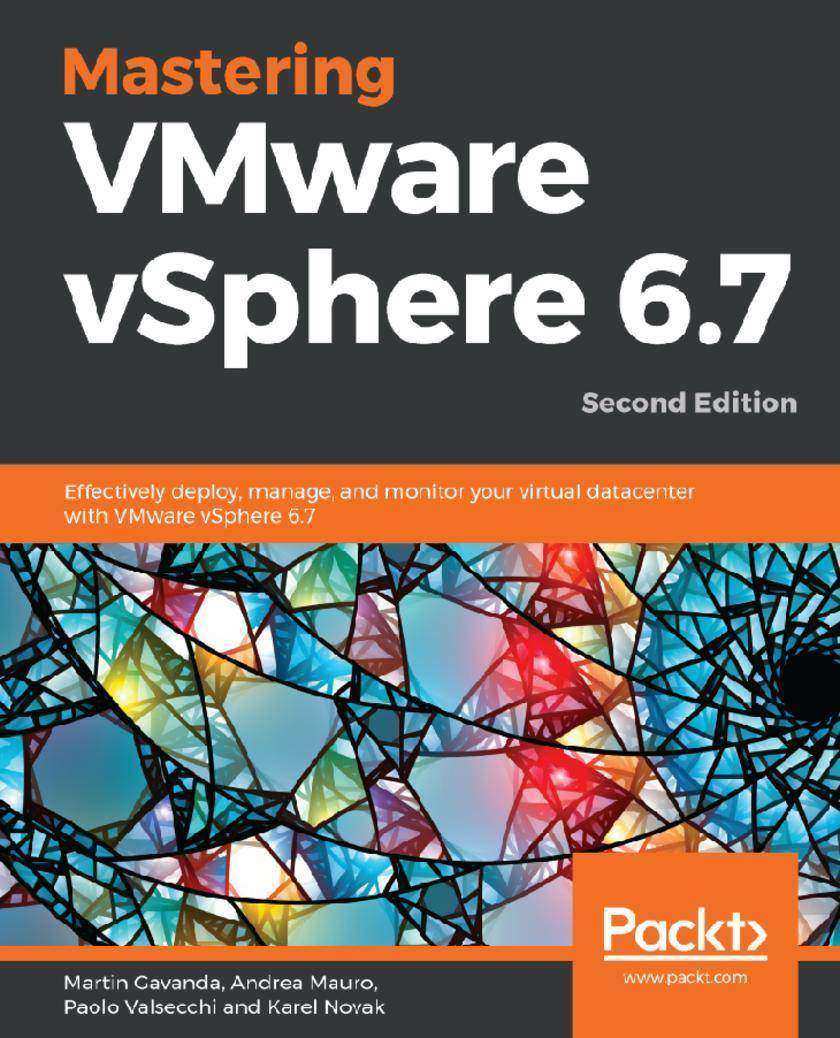
Mastering VMware vSphere 6.7
¥73.02
Unleash the benefits of VMware vSphere 6.7 to provide a powerful, flexible and secure digital infrastructure Key Features * Deep dive into areas like management, security, scalability, availability and more with vSphere 6.7 * Design, deploy and manage VMware vSphere virtual datacenters * Implement monitoring and security of VMware workloads with ease Book Description vSphere 6.7 is the latest release of VMware’s industry-leading, virtual cloud platform. It allows organisations to move to hybrid cloud computing by enabling them to run, manage, connect and secure applications in a common operating environment. This up-to-date, 2nd edition provides complete coverage of vSphere 6.7. Complete with step-by-step explanations of essential concepts, practical examples and self-assessment questions, you will begin with an overview of the products, solutions and features of the vSphere 6.7 suite. You’ll learn how to design and plan a virtual infrastructure and look at the workflow and installation of components. You'll gain insight into best practice configuration, management and security. By the end the book you'll be able to build your own VMware vSphere lab that can run even the most demanding of workloads. What you will learn * Explore the immense functionality of vSphere 6.7 * Design, manage and administer a virtualization environment * Get tips for the VCP6-DCV and VCIX6-DCV exams * Understand how to implement different migration techniques across different environments * Explore vSphere 6.7s powerful capabilities for patching, upgrading and managing the configuration of virtual environments. * Understand core vSphere components * Master resource management, disaster recovery, troubleshooting, monitoring and security Who this book is for This book is for Administrators, Infrastructure Engineers, Architects, and Consultants with basic knowledge of VMware vSphere.
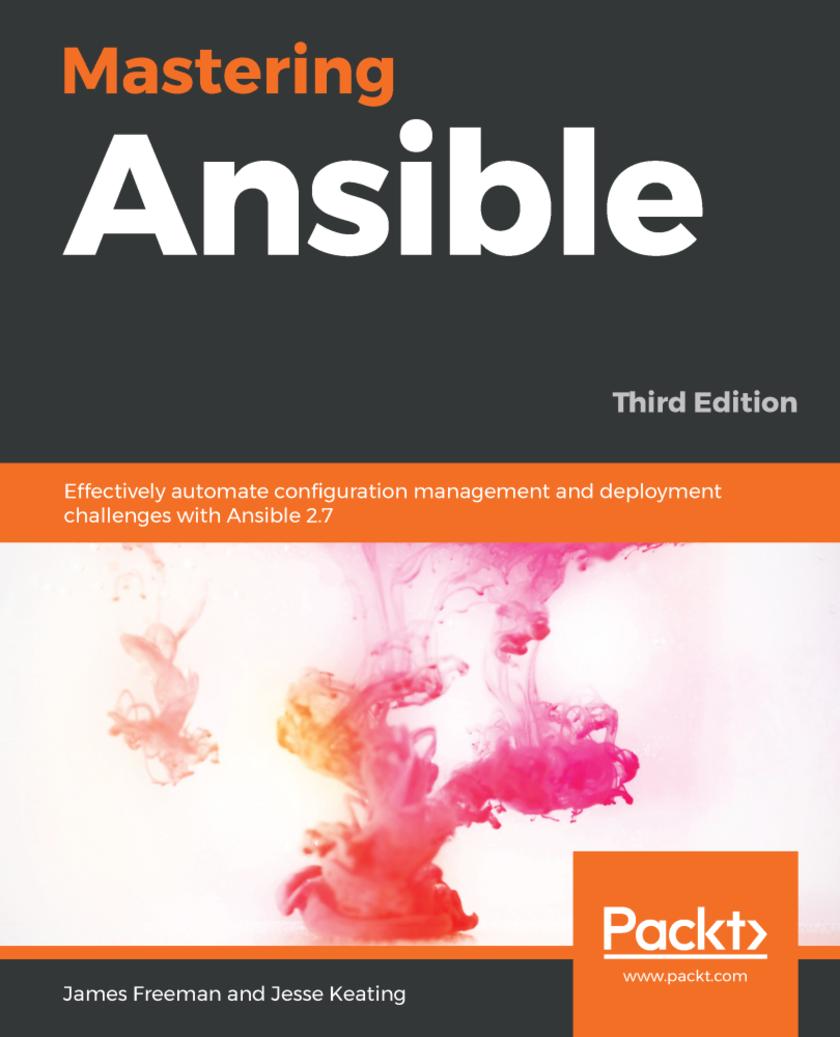
Mastering Ansible
¥73.02
Design, develop, and solve real-world automation and orchestration problems by unlocking the automation capabilities of Ansible. Key Features * Tackle complex automation challenges with the newly added features in Ansible 2.7 Book Description Automation is essential for success in the modern world of DevOps. Ansible provides a simple, yet powerful, automation engine for tackling complex automation challenges. This book will take you on a journey that will help you exploit the latest version's advanced features to help you increase efficiency and accomplish complex orchestrations. This book will help you understand how Ansible 2.7 works at a fundamental level and will also teach you to leverage its advanced capabilities. Throughout this book, you will learn how to encrypt Ansible content at rest and decrypt data at runtime. Next, this book will act as an ideal resource to help you master the advanced features and capabilities required to tackle complex automation challenges. Later, it will walk you through workflows, use cases, orchestrations, troubleshooting, and Ansible extensions. Lastly, you will examine and debug Ansible operations, helping you to understand and resolve issues. By the end of the book, you will be able to unlock the true power of the Ansible automation engine and tackle complex, real- world actions with ease. What you will learn * Gain an in-depth understanding of how Ansible works under the hood * Fully automate Ansible playbook executions with encrypted data * Access and manipulate variable data within playbooks * Use blocks to perform failure recovery or cleanup * Explore the Playbook debugger and the Ansible Console * Troubleshoot unexpected behavior effectively * Work with cloud infrastructure providers and container systems * Develop custom modules, plugins, and dynamic inventory sources Who this book is for This book is for Ansible developers and operators who have an understanding of its core elements and applications but are now looking to enhance their skills in applying automation using Ansible.
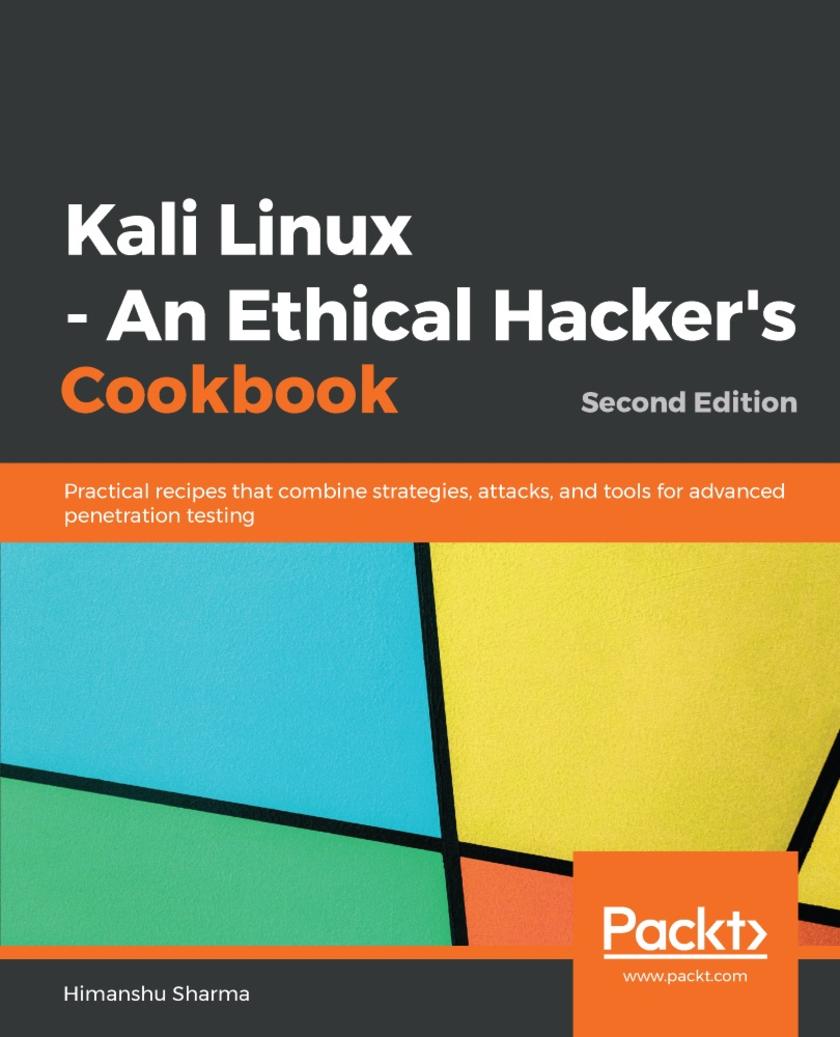
Kali Linux - An Ethical Hacker's Cookbook
¥81.74
Discover end-to-end penetration testing solutions to enhance your ethical hacking skills Key Features * Practical recipes to conduct effective penetration testing using the latest version of Kali Linux * Leverage tools like Metasploit, Wireshark, Nmap, and more to detect vulnerabilities with ease * Confidently perform networking and application attacks using task-oriented recipes Book Description Many organizations have been affected by recent cyber events. At the current rate of hacking, it has become more important than ever to pentest your environment in order to ensure advanced-level security. This book is packed with practical recipes that will quickly get you started with Kali Linux (version 2018.4 / 2019), in addition to covering the core functionalities. The book will get you off to a strong start by introducing you to the installation and configuration of Kali Linux, which will help you to perform your tests. You will also learn how to plan attack strategies and perform web application exploitation using tools such as Burp and JexBoss. As you progress, you will get to grips with performing network exploitation using Metasploit, Sparta, and Wireshark. The book will also help you delve into the technique of carrying out wireless and password attacks using tools such as Patator, John the Ripper, and airoscript-ng. Later chapters will draw focus to the wide range of tools that help in forensics investigations and incident response mechanisms. As you wrap up the concluding chapters, you will learn to create an optimum quality pentest report. By the end of this book, you will be equipped with the knowledge you need to conduct advanced penetration testing, thanks to the book’s crisp and task-oriented recipes. What you will learn * Learn how to install, set up and customize Kali for pentesting on multiple platforms * Pentest routers and embedded devices * Get insights into fiddling around with software-defined radio * Pwn and escalate through a corporate network * Write good quality security reports * Explore digital forensics and memory analysis with Kali Linux Who this book is for If you are an IT security professional, pentester, or security analyst who wants to conduct advanced penetration testing techniques, then this book is for you. Basic knowledge of Kali Linux is assumed.
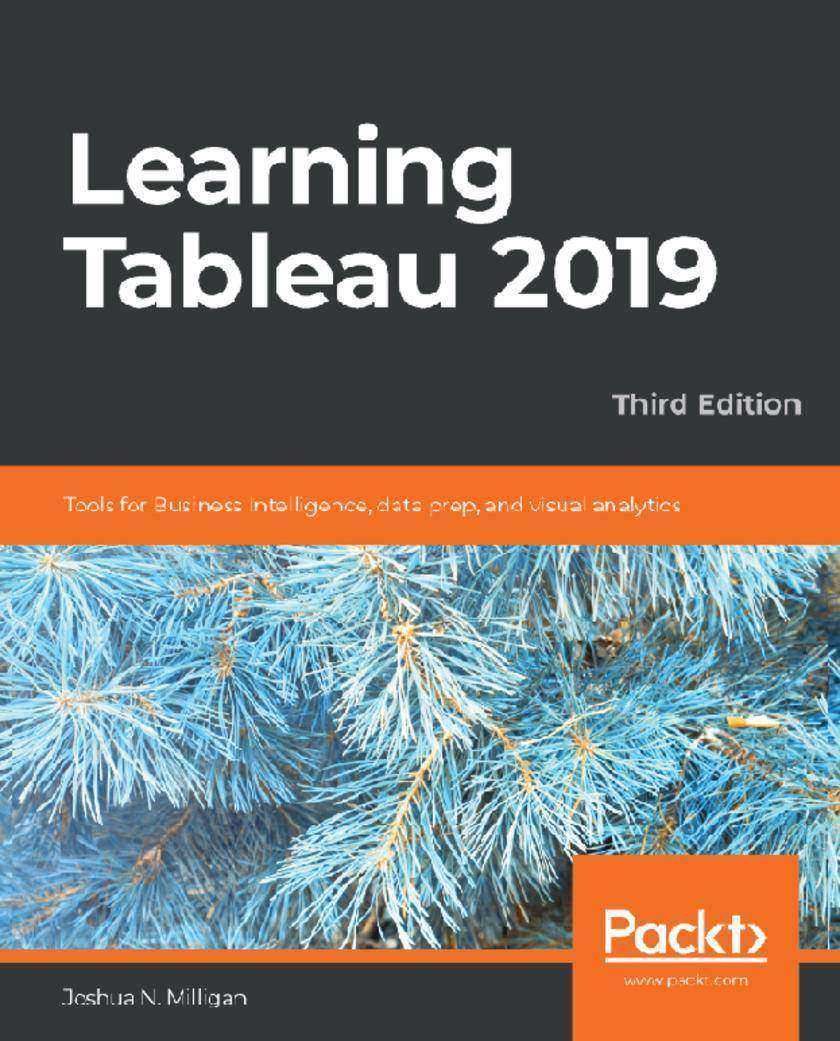
Learning Tableau 2019
¥73.02
Create powerful data visualizations and unlock intelligent business insights with Tableau Key Features * Explore all the latest Tableau 2019 features and redefine business analytics for your organization * Create impressive data visualizations and interactive dashboards to get insights from your data * Learn effective data storytelling to transform how your business leverages data and makes decisions Book Description Tableau is the gold standard of business intelligence and visual analytics tools in every industry. It enables rapid data visualization and interpretation with charts, graphs, dashboards, and much more. Updated with the latest features of Tableau, this book takes you from the foundations of the Tableau 2019 paradigm through to advanced topics. This third edition of the bestselling guide by Tableau Zen Master, Milligan, will help you come to grips with updated features, such as set actions and transparent views. Beginning with installation, you'll create your first visualizations with Tableau and then explore practical examples and advanced techniques. You'll create bar charts, tree maps, scatterplots, time series, and a variety of other visualizations. Next, you'll discover techniques to overcome challenges presented by data structure and quality and engage in effective data storytelling and decision making with business critical information. Finally, you'll be introduced to Tableau Prep, and learn how to use it to integrate and shape data for analysis. By the end of this book, you will be equipped to leverage the powerful features of Tableau 2019 for decision making. What you will learn * Develop stunning visualizations that explain complexity with clarity * Explore the exciting new features of Tableau Desktop and Tableau Prep * Connect to various data sources to bring all your data together * Uncover techniques to prep and structure your data for easy analysis * Create and use calculations to solve problems and enrich analytics * Master advanced topics such as sets, LOD calcs, and much more * Enable smart decisions with clustering, distribution, and forecasting * Share your data stories to build a culture of trust and action Who this book is for This Tableau book is for anyone who wants to understand data. If you’re new to Tableau, don’t worry. This book builds on the foundations to help you understand how Tableau really works and then builds on that knowledge with practical examples before moving on to advanced techniques. Working experience with databases will be useful but is not necessary to get the most out of this book.
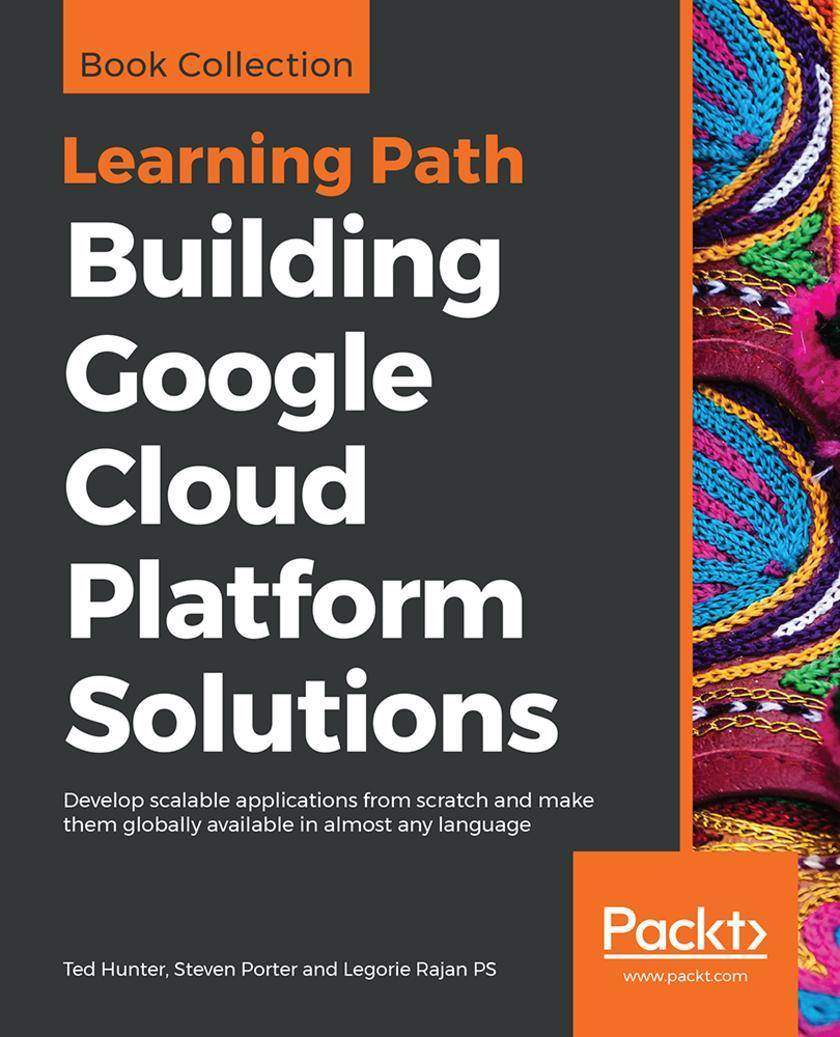
Building Google Cloud Platform Solutions
¥90.46
Build cost-effective and robust cloud solutions with Google Cloud Platform (GCP) using these simple and practical recipes Key Features * Explore the various service offerings of the GCP * Host a Python application on Google Compute Engine * Securely maintain application states with Cloud Storage, Datastore, and Bigtable Book Description GCP is a cloud computing platform with a wide range of products and services that enable you to build and deploy cloud-hosted applications. This Learning Path will guide you in using GCP and designing, deploying, and managing applications on Google Cloud. You will get started by learning how to use App Engine to access Google's scalable hosting and build software that runs on this framework. With the help of Google Compute Engine, you’ll be able to host your workload on virtual machine instances. The later chapters will help you to explore ways to implement authentication and security, Cloud APIs, and command-line and deployment management. As you hone your skills, you’ll understand how to integrate your new applications with various data solutions on GCP, including Cloud SQL, Bigtable, and Cloud Storage. Following this, the book will teach you how to streamline your workflow with tools, including Source Repositories, Container Builder, and Stackdriver. You'll also understand how to deploy and debug services with IntelliJ, implement continuous delivery pipelines, and configure robust monitoring and alerts for your production systems. By the end of this Learning Path, you'll be well versed with GCP’s development tools and be able to develop, deploy, and manage highly scalable and reliable applications. This Learning Path includes content from the following Packt products: * Google Cloud Platform for Developers Ted Hunter and Steven Porter * Google Cloud Platform Cookbook by Legorie Rajan PS What you will learn * Host an application using Google Cloud Functions * Migrate a MySQL database to Cloud Spanner * Configure a network for a highly available application on GCP * Learn simple image processing using Storage and Cloud Functions * Automate security checks using Policy Scanner * Deploy and run services on App Engine and Container Engine * Minimize downtime and mitigate issues with Stackdriver Monitoring and Debugger * Integrate with big data solutions, including BigQuery, Dataflow, and Pub/Sub Who this book is for This Learning Path is for IT professionals, engineers, and developers who want to implement Google Cloud in their organizations. Administrators and architects planning to make their organization more efficient with Google Cloud will also find this Learning Path useful. Basic understanding of GCP and its services is a must.
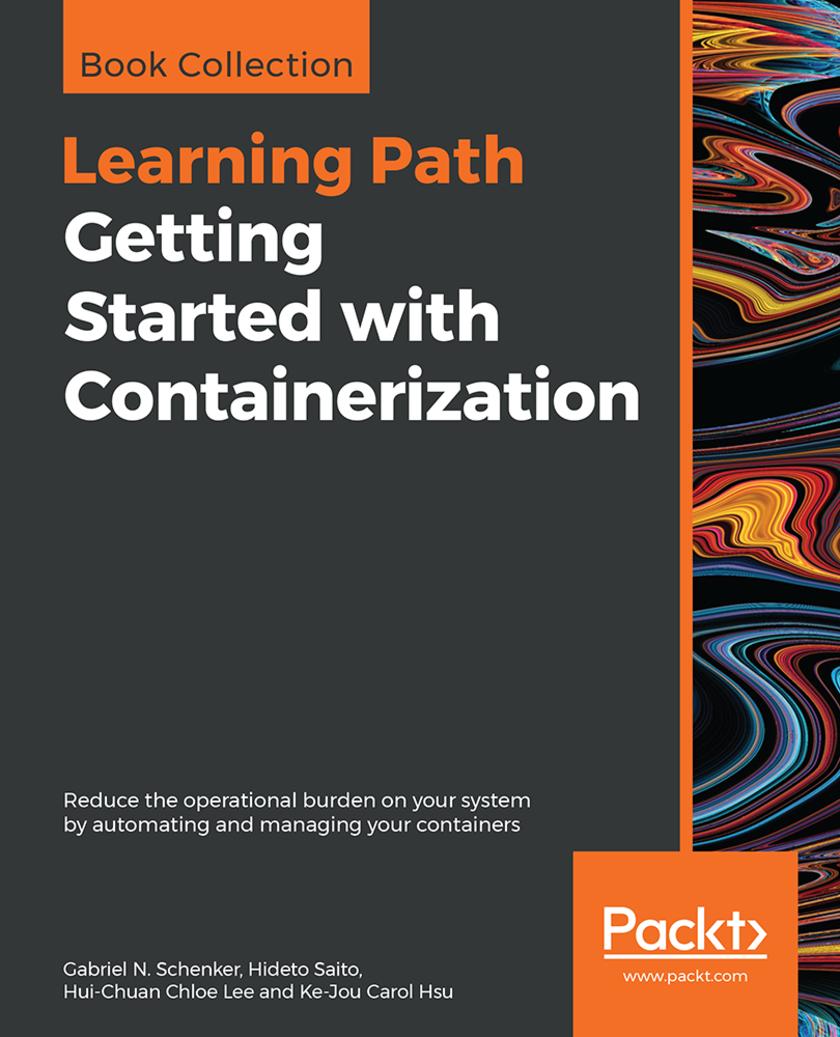
Getting Started with Containerization
¥90.46
Choose the smarter way to learn about containerizing your applications and running them in production. Key Features * Deploy and manage highly scalable, containerized applications with Kubernetes * Build high-availability Kubernetes clusters * Secure your applications via encapsulation, networks, and secrets Book Description Kubernetes is an open source orchestration platform for managing containers in a cluster environment. This Learning Path introduces you to the world of containerization, in addition to providing you with an overview of Docker fundamentals. As you progress, you will be able to understand how Kubernetes works with containers. Starting with creating Kubernetes clusters and running applications with proper authentication and authorization, you'll learn how to create high-availability Kubernetes clusters on Amazon Web Services (AWS), and also learn how to use kubeconfig to manage different clusters. Whether it is learning about Docker containers and Docker Compose, or building a continuous delivery pipeline for your application, this Learning Path will equip you with all the right tools and techniques to get started with containerization. By the end of this Learning Path, you will have gained hands-on experience of working with Docker containers and orchestrators, including SwarmKit and Kubernetes. This Learning Path includes content from the following Packt products: * Kubernetes Cookbook - Second Edition by Hideto Saito, Hui-Chuan Chloe Lee, and Ke-Jou Carol Hsu * Learn Docker - Fundamentals of Docker 18.x by Gabriel N. Schenker What you will learn * Build your own container cluster * Run a highly distributed application with Docker Swarm or Kubernetes * Update or rollback a distributed application with zero downtime * Containerize your traditional or microservice-based application * Build a continuous delivery pipeline for your application * Track metrics and logs for every container in your cluster * Implement container orchestration to streamline deploying and managing applications Who this book is for This beginner-level Learning Path is designed for system administrators, operations engineers, DevOps engineers, and developers who want to get started with Docker and Kubernetes. Although no prior experience with Docker is required, basic knowledge of Kubernetes and containers will be helpful.

Programming Microsoft Dynamics 365 Business Central
¥88.28
Explore the fundamentals of Dynamics 365 Business Central and the Visual Studio Code development environment with the help of useful examples and case studies Key Features * Tailor your applications to best suit the needs of your business * Explore the latest features of Business Central with examples curated by industry experts * Integrate Business Central features in your applications with this comprehensive guide Book Description Microsoft Dynamics 365 Business Central is a full ERP business solution suite with a robust set of development tools to support customization and enhancement. These tools can be used to tailor Business Central's in-built applications to support complete management functions for finance, supply chain, manufacturing, and operations. Using a case study approach, this book will introduce you to Dynamics 365 Business Central and Visual Studio Code development tools to help you become a productive Business Central developer. You'll also learn how to evaluate a product's development capabilities and manage Business Central-based development and implementation. You'll explore application structure, the construction of and uses for each object type, and how it all fits together to build apps that meet special business requirements. By the end of this book, you'll understand how to design and develop high-quality software using the Visual Studio Code development environment, the AL language paired with the improved editor, patterns, and features. What you will learn * Programming using the AL language in the Visual Studio Code development environment * Explore functional design and development using AL * How to build interactive pages and learn how to extract data for users * How to use best practices to design and develop modifications for new functionality integrated with the standard Business Central software * Become familiar with deploying the broad range of components available in a Business Central system * Create robust, viable systems to address specific business requirements Who this book is for If you want to learn about Dynamics 365 Business Central's powerful and extensive built-in development capabilities, this is the book for you. ERP consultants and managers of Business Central development will also find this book helpful. Although you aren't expected to have worked with Dynamics Business Central, basic understanding of programming and familiarity with business application software will help you understand the concepts covered in this book.
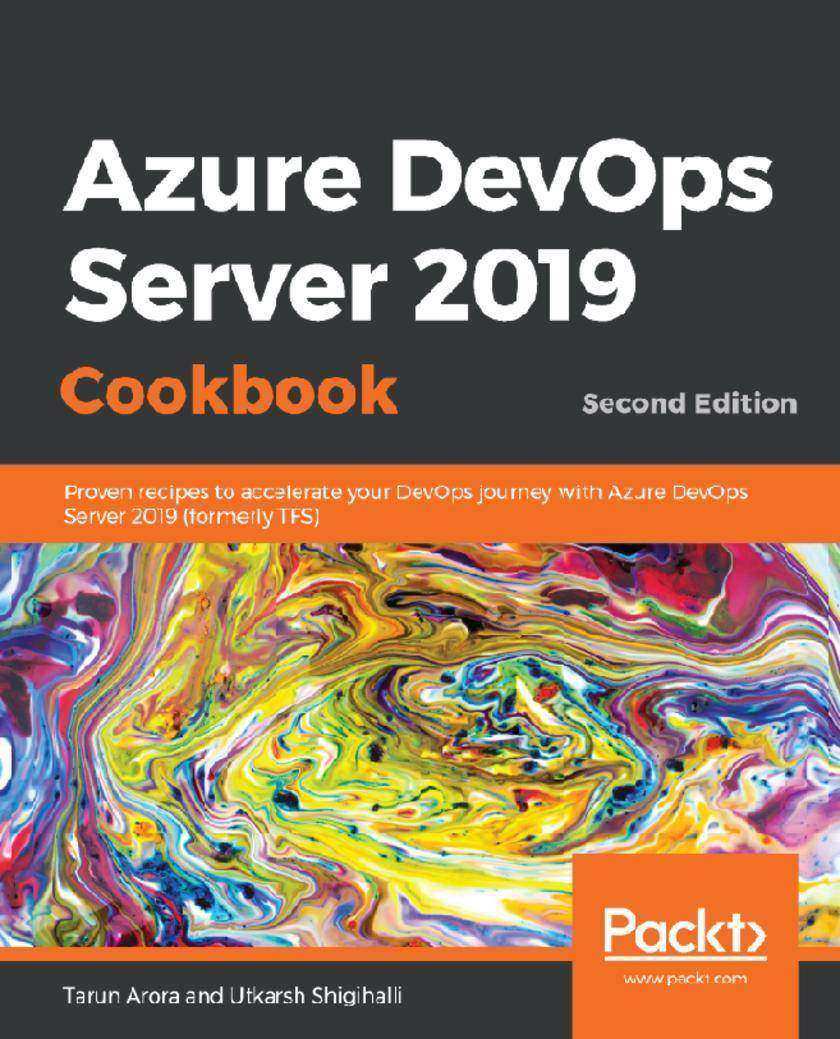
Azure DevOps Server 2019 Cookbook
¥88.28
Over 70 recipes to effectively apply DevOps best practices and implement Agile, Git, CI-CD & Test automation using Azure DevOps Server (TFS) 2019 Key Features * Learn improving code quality using pull requests, branch policies, githooks and git branching design * Accelerate the deployment of high quality software by automating build and releases using CI-CD Pipelines. * Learn tried and tested techniques to automate database deployments, App Service & Function Deployments in Azure. Book Description Azure DevOps Server, previously known as Team Foundation Server (TFS), is a comprehensive on-premise DevOps toolset with a rich ecosystem of open source plugins. This book is your one stop guide to learn how to effectively use all of these Azure DevOps services to go from zero to DevOps. You will start by building high-quality scalable software targeting .NET, .NET core or Node.js applications. You will learn techniques that will help you to set up end-to-end traceability of your code changes from design through to release. Whether you are deploying software on-premise or in the cloud in App Service, Functions, or Azure VMs, this book will help you learn release management techniques to reduce release failures. Next, you will be able to secure application configuration by using Azure KeyVault. You will also learn how to create and release extensions to the Azure DevOps marketplace and reach million developer ecosystem for feedback. The working extension samples will allow you to iterate changes in your extensions easily and release updates to the marketplace quickly. By the end of this book, techniques provided in the book will help you break down the invisible silos between your software development teams. This will transform you from being a good software development team to an elite modern cross functional software development team. What you will learn * Set up a team project for an Agile delivery team, importing requirements from Excel * Plan,track, and monitor progress using self updating boards, Sprint and Kanban boards * Unlock the features of Git by using branch policies, Git pull requests, forks, and Git hooks * Build and release .NET core, SQL and Node.js applications using Azure Pipeline * Automate testing by integrating Microsoft and open source testing frameworks * Extend Azure DevOps Server to a million developer ecosystem Who this book is for This book is for anyone looking to succeed with DevOps. The techniques in this book apply to all roles of the software development lifecycle including developers, testers, architects, configuration analysts, site reliability engineers and release managers. If you are a new user you’ll learn how to get started; if you are an experienced user you’ll learn how to launch your project into a modern and mature DevOps enabled software development team.
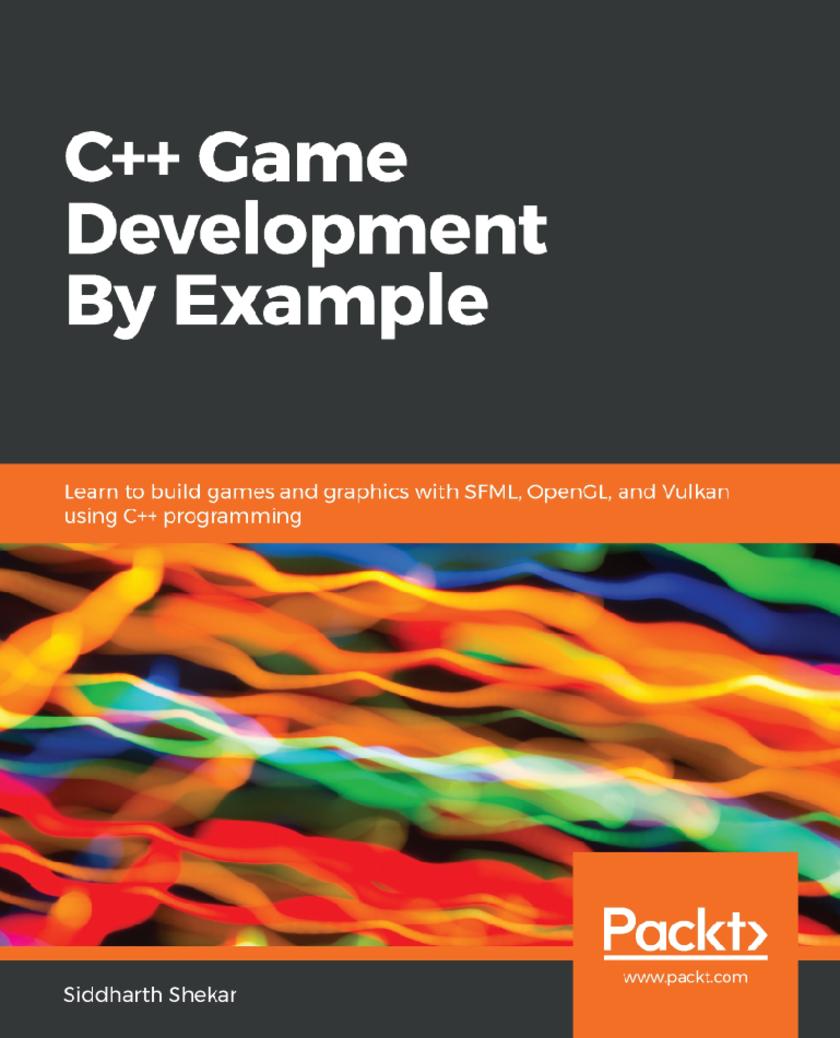
C++ Game Development By Example
¥62.12
Explore modern game programming and rendering techniques to build games using C++ programming language and its popular libraries Key Features * Learn how you can build basic 2D and complex 3D games with C++ * Understand shadows, texturing, lighting, and rendering in 3D game development using OpenGL * Uncover modern graphics programming techniques and GPU compute methods using the Vulkan API Book Description Although numerous languages are currently being used to develop games, C++ remains the standard for fabricating expert libraries and tool chains for game development. This book introduces you to the world of game development with C++. C++ Game Development By Example starts by touching upon the basic concepts of math, programming, and computer graphics and creating a simple side-scrolling action 2D game. You'll build a solid foundation by studying basic game concepts such as creating game loops, rendering 2D game scenes using SFML, 2D sprite creation and animation, and collision detection. The book will help you advance to creating a 3D physics puzzle game using modern OpenGL and the Bullet physics engine. You'll understand the graphics pipeline, which entails creating 3D objects using vertex and index buffers and rendering them to the scene using vertex and fragment shaders. Finally, you'll create a basic project using the Vulkan library that'll help you get to grips with creating swap chains, image views, render passes, and frame buffers for building high-performance graphics in your games. By the end of this book, you’ll be ready with 3 compelling projects created with SFML, the Vulkan API, and OpenGL, and you'll be able take your game and graphics programming skills to the next level. What you will learn * Understand shaders and how to write a basic vertex and fragment shader * Build a Visual Studio project and add SFML to it * Discover how to create sprite animations and a game character class * Add sound effects and background music to your game * Grasp how to integrate Vulkan into Visual Studio * Create shaders and convert them to the SPIR-V binary format Who this book is for If you’re a developer keen to learn game development with C++ or get up to date with game development, this book is for you. Some knowledge of C++ programming is assumed.

Learn D3.js
¥62.12
Explore the power of D3.js 5 and its integration with web technologies for building rich and interactive data visualization solutions Key Features * Explore the latest D3.js 5 for creating charts, plots, and force-directed graphics * Practical guide for creating interactive graphics and data-driven apps with JavaScript * Build Real-time visualization and transition on web using SVG with D3.js Book Description This book is a practical hands-on introduction to D3 (Data-driven Documents): the most popular open-source JavaScript library for creating interactive web-based data visualizations. Based entirely on open web standards, D3 provides an integrated collection of tools for efficiently binding data to graphical elements. If you have basic knowledge of HTML, CSS and JavaScript you can use D3.js to create beautiful interactive web-based data visualizations. D3 is not a charting library. It doesn’t contain any pre-defined chart types, but can be used to create whatever visual representations of data you can imagine. The goal of this book is to introduce D3 and provide a learning path so that you obtain a solid understanding of its fundamental concepts, learn to use most of its modules and functions, and gain enough experience to create your own D3 visualizations. You will learn how to create bar, line, pie and scatter charts, trees, dendograms, treemaps, circle packs, chord/ribbon diagrams, sankey diagrams, animated network diagrams, and maps using different geographical projections. Fundamental concepts are explained in each chapter and then applied to a larger example in step-by-step tutorials, complete with full code, from hundreds of examples you can download and run. This book covers D3 version 5 and is based on ES2015 JavaScript. What you will learn * Learn to use D3.js version 5 and web standards to create beautiful interactive data-driven visualizations for the web * Bind data to DOM elements, applying different scales, color schemes and configuring smooth animated transitions for data updates * Generate data structures and layouts for many popular chart formats * Apply interactive behaviors to any chart * Create thematic maps based on GIS data using different geographical projections with interactive behaviors * Load, parse and transform data from JSON and CSV formats Who this book is for The book is intended for web developers, web designers, data scientists, artists, and any developer who wish to create interactive data visualization for the Web using D3. The book assumes basic knowledge of HTML, CSs, and JavaScript.
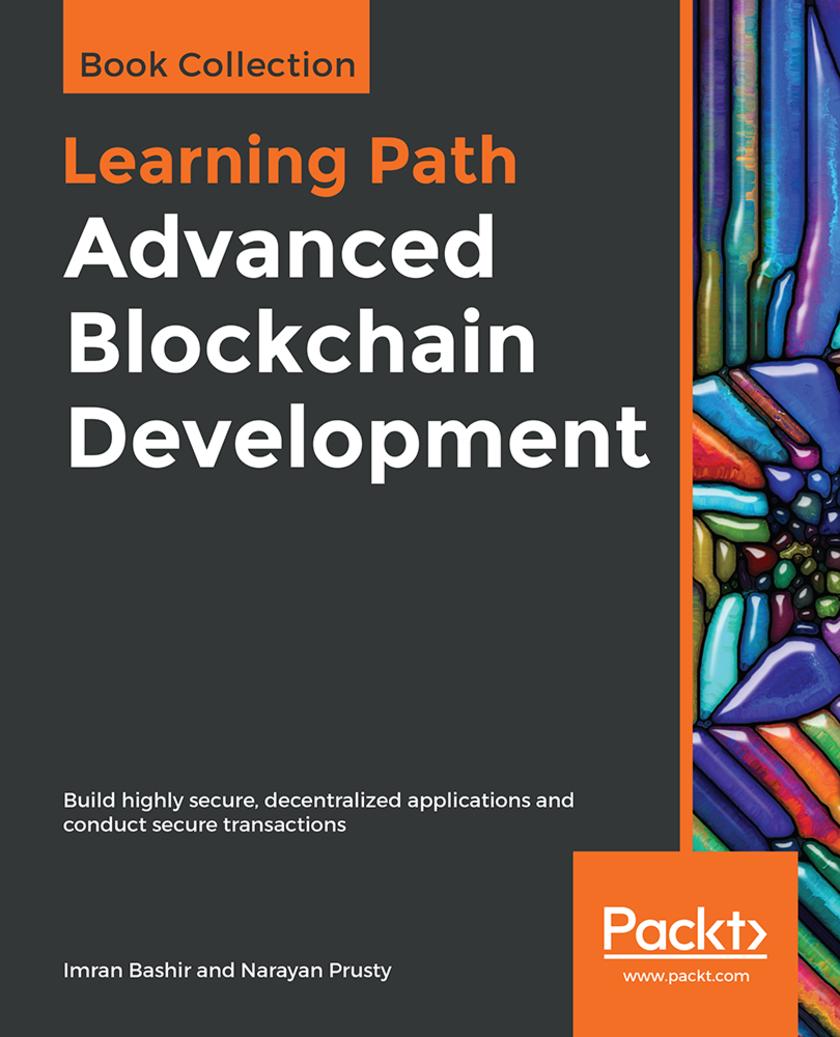
Advanced Blockchain Development
¥88.28
Explore distributed ledger technology, decentralization, and smart contracts and develop real-time decentralized applications with Ethereum and Solidity Key Features * Get to grips with the underlying technical principles and implementations of blockchain * Build powerful applications using Ethereum to secure transactions and create smart contracts * Gain advanced insights into cryptography and cryptocurrencies Book Description Blockchain technology is a distributed ledger with applications in industries such as finance, government, and media. This Learning Path is your guide to building blockchain networks using Ethereum, JavaScript, and Solidity. You will get started by understanding the technical foundations of blockchain technology, including distributed systems, cryptography and how this digital ledger keeps data secure. Further into the chapters, you’ll gain insights into developing applications using Ethereum and Hyperledger. As you build on your knowledge of Ether security, mining , smart contracts, and Solidity, you’ll learn how to create robust and secure applications that run exactly as programmed without being affected by fraud, censorship, or third-party interference. Toward the concluding chapters, you’ll explore how blockchain solutions can be implemented in applications such as IoT apps, in addition to its use in currencies. The Learning Path will also highlight how you can increase blockchain scalability and even discusses the future scope of this fascinating and powerful technology. By the end of this Learning Path, you'll be equipped with the skills you need to tackle pain points encountered in the blockchain life cycle and confidently design and deploy decentralized applications. This Learning Path includes content from the following Packt products: * Mastering Blockchain - Second Edition by Imran Bashir * Building Blockchain Projects by Narayan Prusty What you will learn * Understand why decentralized applications are important * Discover the mechanisms behind bitcoin and alternative cryptocurrencies * Master how cryptography is used to secure data with the help of examples * Maintain, monitor, and manage your blockchain solutions * Create Ethereum wallets * Explore research topics and the future scope of blockchain technology Who this book is for This Learning Path is designed for blockchain developers who want to build decentralized applications and smart contracts from scratch using Hyperledger. Basic familiarity with any programming language will be useful to get started with this Learning Path.
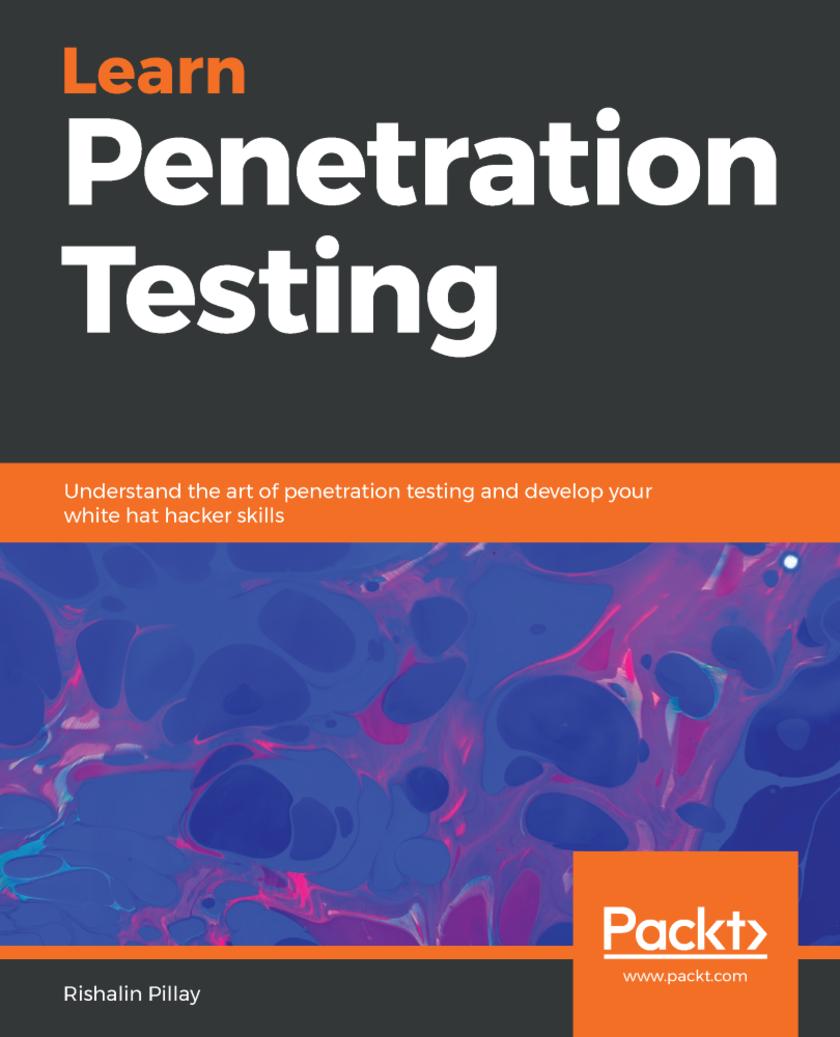
Learn Penetration Testing
¥70.84
Get up to speed with various penetration testing techniques and resolve security threats of varying complexity Key Features * Enhance your penetration testing skills to tackle security threats * Learn to gather information, find vulnerabilities, and exploit enterprise defenses * Navigate secured systems with the most up-to-date version of Kali Linux (2019.1) and Metasploit (5.0.0) Book Description Sending information via the internet is not entirely private, as evidenced by the rise in hacking, malware attacks, and security threats. With the help of this book, you'll learn crucial penetration testing techniques to help you evaluate enterprise defenses. You'll start by understanding each stage of pentesting and deploying target virtual machines, including Linux and Windows. Next, the book will guide you through performing intermediate penetration testing in a controlled environment. With the help of practical use cases, you'll also be able to implement your learning in real-world scenarios. By studying everything from setting up your lab, information gathering and password attacks, through to social engineering and post exploitation, you'll be able to successfully overcome security threats. The book will even help you leverage the best tools, such as Kali Linux, Metasploit, Burp Suite, and other open source pentesting tools to perform these techniques. Toward the later chapters, you'll focus on best practices to quickly resolve security threats. By the end of this book, you'll be well versed with various penetration testing techniques so as to be able to tackle security threats effectively What you will learn * Perform entry-level penetration tests by learning various concepts and techniques * Understand both common and not-so-common vulnerabilities from an attacker's perspective * Get familiar with intermediate attack methods that can be used in real-world scenarios * Understand how vulnerabilities are created by developers and how to fix some of them at source code level * Become well versed with basic tools for ethical hacking purposes * Exploit known vulnerable services with tools such as Metasploit Who this book is for If you’re just getting started with penetration testing and want to explore various security domains, this book is for you. Security professionals, network engineers, and amateur ethical hackers will also find this book useful. Prior knowledge of penetration testing and ethical hacking is not necessary.

Hands-On Time Series Analysis with R
¥62.12
Build efficient forecasting models using traditional time series models and machine learning algorithms. Key Features * Perform time series analysis and forecasting using R packages such as Forecast and h2o * Develop models and find patterns to create visualizations using the TSstudio and plotly packages * Master statistics and implement time-series methods using examples mentioned Book Description Time series analysis is the art of extracting meaningful insights from, and revealing patterns in, time series data using statistical and data visualization approaches. These insights and patterns can then be utilized to explore past events and forecast future values in the series. This book explores the basics of time series analysis with R and lays the foundations you need to build forecasting models. You will learn how to preprocess raw time series data and clean and manipulate data with packages such as stats, lubridate, xts, and zoo. You will analyze data and extract meaningful information from it using both descriptive statistics and rich data visualization tools in R such as the TSstudio, plotly, and ggplot2 packages. The later section of the book delves into traditional forecasting models such as time series linear regression, exponential smoothing (Holt, Holt-Winter, and more) and Auto-Regressive Integrated Moving Average (ARIMA) models with the stats and forecast packages. You'll also cover advanced time series regression models with machine learning algorithms such as Random Forest and Gradient Boosting Machine using the h2o package. By the end of this book, you will have the skills needed to explore your data, identify patterns, and build a forecasting model using various traditional and machine learning methods. What you will learn * Visualize time series data and derive better insights * Explore auto-correlation and master statistical techniques * Use time series analysis tools from the stats, TSstudio, and forecast packages * Explore and identify seasonal and correlation patterns * Work with different time series formats in R * Explore time series models such as ARIMA, Holt-Winters, and more * Evaluate high-performance forecasting solutions Who this book is for Hands-On Time Series Analysis with R is ideal for data analysts, data scientists, and all R developers who are looking to perform time series analysis to predict outcomes effectively. A basic knowledge of statistics is required; some knowledge in R is expected, but not mandatory.
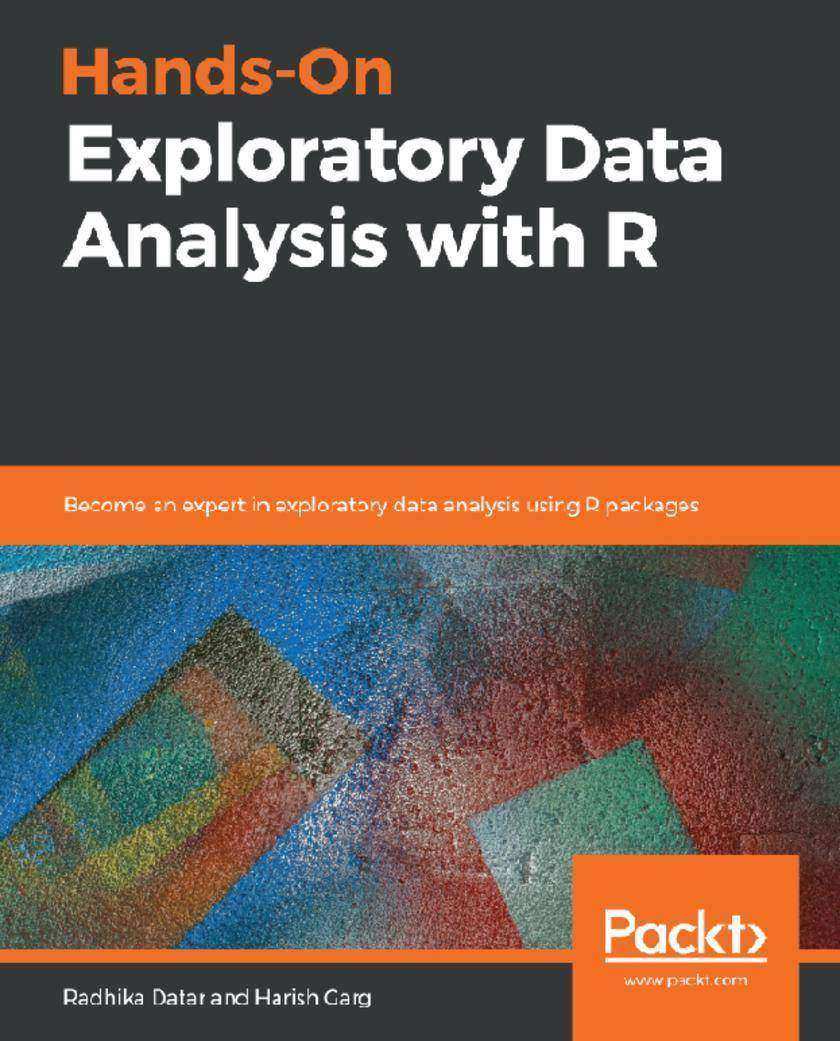
Hands-On Exploratory Data Analysis with R
¥53.40
Learn exploratory data analysis concepts using powerful R packages to enhance your R data analysis skills Key Features * Speed up your data analysis projects using powerful R packages and techniques * Create multiple hands-on data analysis projects using real-world data * Discover and practice graphical exploratory analysis techniques across domains Book Description Hands-On Exploratory Data Analysis with R will help you build not just a foundation but also expertise in the elementary ways to analyze data. You will learn how to understand your data and summarize its main characteristics. You'll also uncover the structure of your data, and you'll learn graphical and numerical techniques using the R language. This book covers the entire exploratory data analysis (EDA) process—data collection, generating statistics, distribution, and invalidating the hypothesis. As you progress through the book, you will learn how to set up a data analysis environment with tools such as ggplot2, knitr, and R Markdown, using tools such as DOE Scatter Plot and SML2010 for multifactor, optimization, and regression data problems. By the end of this book, you will be able to successfully carry out a preliminary investigation on any dataset, identify hidden insights, and present your results in a business context. What you will learn * Learn powerful R techniques to speed up your data analysis projects * Import, clean, and explore data using powerful R packages * Practice graphical exploratory analysis techniques * Create informative data analysis reports using ggplot2 * Identify and clean missing and erroneous data * Explore data analysis techniques to analyze multi-factor datasets Who this book is for Hands-On Exploratory Data Analysis with R is for data enthusiasts who want to build a strong foundation for data analysis. If you are a data analyst, data engineer, software engineer, or product manager, this book will sharpen your skills in the complete workflow of exploratory data analysis.
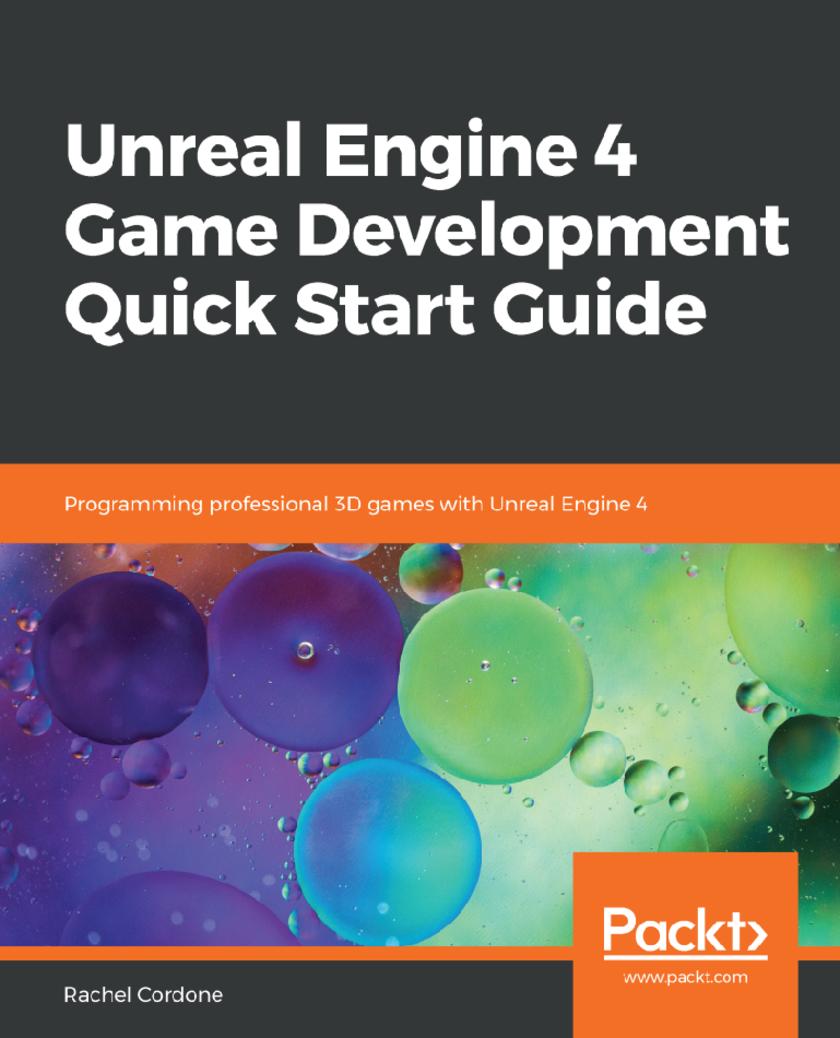
Unreal Engine 4 Game Development Quick Start Guide
¥44.68
Learn how to use Unreal Engine 4 by building 3D and multiplayer games using Blueprints Key Features * Learn the fundamentals of Unreal Engine such as project templates, Blueprints, and C++ * Learn to design games; use UMG to create menus and HUDs, and replication to create multiplayer games * Build dynamic game elements using Animation Blueprints and Behavior Trees Book Description Unreal Engine is a popular game engine for developers to build high-end 2D and 3D games. This book is a practical guide, starting off by quickly introducing you to the Unreal Engine 4 (UE4) ecosystem. You will learn how to create Blueprints and C++ code to define your game's functionality. You will be familiarized with the core systems of UE4 such as UMG, Animation Blueprints, and Behavior Trees. You will also learn how to use replication to create multiplayer games. By the end of this book, you will have a broad, solid knowledge base to expand upon on your journey with UE4. What you will learn * Use project templates to give your game a head start * Create custom Blueprints and C++ classes and extend from Epic's base classes * Use UMG to create menus and HUDs for your game * Create more dynamic characters using Animation Blueprints * Learn how to create complex AI with Behavior Trees * Use replication to create multiplayer games * Optimize, test, and deploy a UE4 project Who this book is for Readers who already have some game development experience and Unity users who would like to try UE4 will all benefit from this book. Knowledge of basic Object-Oriented Programming topics such as variables, functions, and classes is assumed.




 购物车
购物车 个人中心
个人中心



